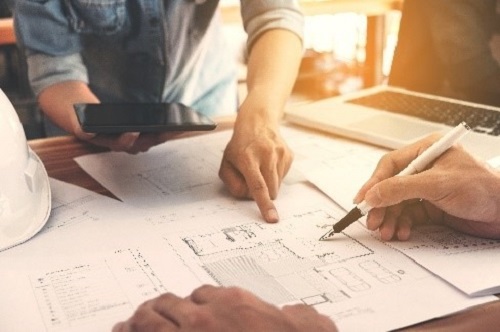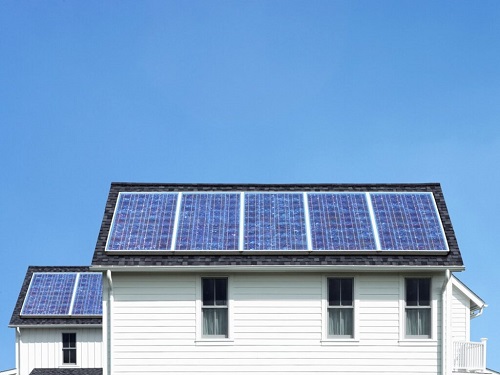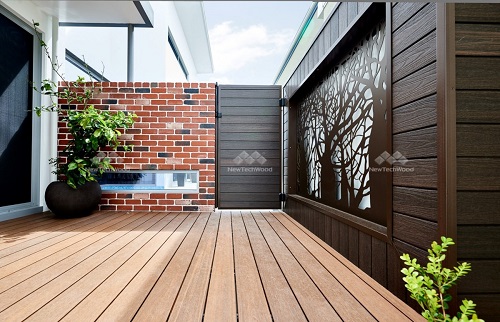Before we explore any sustainable home design ideas, we must first ask ourselves what a sustainable home is.
Generally speaking, ‘sustainability’ refers to buildings with little to no impact on the surrounding environment. Their eco-friendly construction hurts no flora or fauna and requires less energy to construct in the first place and less energy to heat and cool. Sustainable homes (and other buildings) are constructed with various materials that also meet ‘sustainable’ standards.
The aim is to design sustainable homes that are environment-friendly yet still meet the needs and comfort requirements of modern families. To achieve this outcome, we need everyone in the building industry to be on board with the idea. Architects can design the most beautiful, eco-friendly homes on the planet, but if the construction materials available don’t meet the same standards, the whole idea collapses.
You can support the industry’s sustainable objectives by buying from manufacturers and providers of sustainable materials and products.
Home Sustainability Tips
Sustainable home design is one of the biggest ways we can minimise our impact on the environment. Sustainable home design can be a daunting prospect for the inexperienced, so here we list 5 basic but important sustainable home design ideas to kick-start your next project:
1. Location

It’s pointless to spend time and money building a sustainable home if you don’t also consider the location. Regardless of whether you are going totally off the grid or planning to live in a semi-rural area, consider the cost of connecting to existing infrastructures and the transportation costs (in terms of both finance and pollution) you will incur for everyday excursions such as shopping, work, school, etc. Also, avoid hazardous areas such as known fire or flood zones, all of which will add more costs to the construction of your new home.
2. Design Stage

Choose an architect or builder with knowledge/experience of building sustainable homes, or at the very least, is prepared to work with you to achieve this. Pick their brains but also do your own research and ask questions. It may even be possible to take an existing home design and have it modified to meet sustainable standards.
The layout of your proposed home is also a huge factor. Larger homes are less energy efficient. And did you know that building upwards can be more efficient than building wider?
Sustainable construction options: Ask your architect about options such as rammed earth, concrete flooring, mud brick, hemp masonry, straw bale construction, and the green roofs and walls concept.
Orientation: At the design stage, determine which direction you want your house to face and where your window placements will be. The location of your land and the surrounding landscape and vegetation (i.e., hills and trees) will determine whether your home would be better placed north facing, or south facing, or something in between, so you can achieve more or less sunlight that will affect cooling or heat retention.
3. Energy Efficiency

Good for the environment and good for your wallet! Do your research on:
- Home orientation
- Sustainable construction materials that are energy efficient
- Solar panels
- Insulation – roofs, walls, floors
- Double glazing (windows)
- Built-in underfloor heating (for cold climate areas)
- Smart lighting choices (combining LED and CFL can lower overall energy use)
- Energy-efficient appliances including showerheads, taps, etc.
- Efficient water heater
- Greywater systems
4. Heating and Cooling

This is where the orientation of your home is important, as it will enable you to take advantage of sun and shade in each season.
Insulation and ventilation are also important parts of the design. In cooler climates, you want to attract sun into your home for warmth, but in warmer areas, you want to keep the heat out.
Other considerations:
In some areas, depending on the climate, verandas, extended patios, and extra shade installed over windows would be considered appropriate, whereas in other areas, these would be deemed unnecessary.
When choosing a heating/cooling system, ensure it suits the size of your home and also your life circumstances. For example, if you have a large home and a large family utilising most of the rooms regularly, a ducted central heating/cooling system would make sense. If not, the heating/cooling of all those unused rooms will be a huge waste of energy (and money). On the other hand, if you purchase a unit that has zone settings you can switch on and off as necessary, you can achieve the same climate control outcome without the wastage.
Heating appliances: Electric portable heaters are notorious for being energy guzzlers, despite their cheap price tag. Open fireplaces, unfortunately, are also considered inefficient in terms of wood burning methods, and actually contribute to air pollution. A shame, isn’t it, because who doesn’t love an open fireplace in winter?
Use Mother Nature to help Mother Nature! Depending on where you live, planting a deciduous tree by an affected window will mean in winter, when it loses its leaves, this will let those warm sun-rays into your house. Then in summer, when it is covered with leaves, this will produce valuable shade and keep the hot sun off those windows.
5. Recycled and Environment-Friendly Materials

These days it is trendy to use recycled building materials such as old bricks, pavers, and recycled timbers. Not only do they add character to a home, but they also offer the ultimate in sustainability. Some merchants specialise in selling recycled building materials.
Composite timbers are also high-value building materials, because they use recycled products. For example, NewTechWood’s composite decking, cladding and screening products are manufactured using recycled timbers and plastics and meet several important international standards and certifications for sustainability.
By using recycled goods for manufacturing NewTechWood composite timber products, every year NewTechWood saves over 26,000 tons of plastic from being buried in landfills forever. Providing customers with beautiful and durable products whilst also caring for the environment is close to our heart.
During the course of doing your homework and discussing the options with your architect or builder, you will, no doubt, discover more ways to build an energy-efficient, environment-friendly and sustainable home. The above will help kick-start your efforts.
And don’t forget that sustainable living extends beyond your home and into the garden… but that’s a topic for another day.
And there you have our top 5 sustainable home design ideas.

